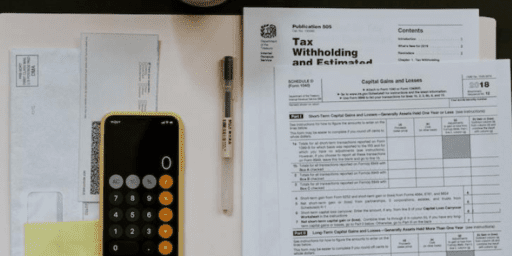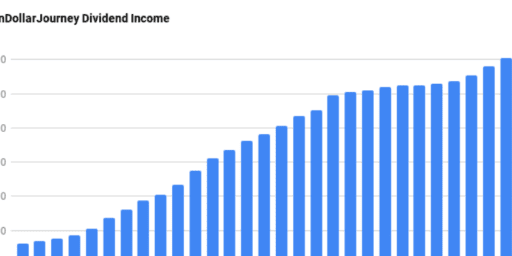Indexed Family RESP Portfolio Update – 2018 Edition
It has been about a year since my last RESP portfolio update which is probably an appropriate time span since it’s a fairly steady portfolio that is 100% indexed.
The RESP portfolios for our children are set up with TD e-Series mutual funds which provide a low-cost way to index the market (some other ways to index your portfolio). We contribute $2,500/account/year to get the maximum contribution from the government of $500/account/year. So basically $5,000 contributed to the two RESP accounts gives us $6,000 annually to invest.
We went with index mutual funds instead of index ETFs because of the freedom of adding small amounts at a time without having to pay a commission for every purchase. Since opening the accounts though, there have been some advancements in ETFs and discount stock brokerages (here is an updated comparison). If I were to set up an RESP account today, it would be tough to choose between this and brokerages that offer no-commission ETFs. If I were forced to choose, I would likely choose the no-commission ETF route, but I’ll stay the course with TD funds for now.
The original plan was to be aggressive for the first 10 years (90% equities 10% bonds) for each child with increasing fixed income as the University tuition nears. I copied the table from my original RESP strategy article below.
I have since adjusted the first 10 years to have close to 75% equities and 25% bonds. I like to keep things simple, and having it set up this way will still provide solid long-term results, while enabling me to make sure I have 25% in each of Canadian equity, US equity, International equity, and Bonds. As of today, my oldest child is 9 and my youngest 6. I have started to increase the bond allocation of my oldest child but staying fairly aggressive with the youngest account.
Index 0-10yrs 10-14yrs 14-17yrs 18yrs + Canadian Equity 30%25%20% 10% 0% US Equity 30%25%20% 10% 0% International Equity 30%25%20% 10% 0% Canadian Bonds 10%25%40% 35% 0% GIC’s 0% 0% 35+% 75% Money Market Fund 0% 0% 0% 25%
First (oldest child) RESP Portfolio (started 2nd quarter 2008)
$2,500 deposit already completed for 2018
| Investments | Units Held |
Price Per Unit |
Market Value |
% Holdings |
Book Value |
| TD CDN Money Mkt | 353.835 | $10.00 | $3,538.35 | 7.070 | $3,538.35 |
| TD CDN Index-e** | 394.723 | $26.77 | $10,566.73 | 21.110 | $8,396.40 |
| TD US Index-e** | 179.190 | $59.22 | $10,611.63 | 21.200 | $4,583.80 |
| TD CDN Bond Index-e** | 1,301.728 | $11.42 | $14,865.73 | 29.700 | $15,071.17 |
| TD Int’l Index-e** | 739.506 | $14.17 | $10,478.80 | 20.930 | $7,298.29 |
| Total as of Jan 05, 2018 | $50,061.24 | $38,888.01 | |||
Previous update January 2017 ($2,500 contribution not made yet):
| Investments | Units Held |
Price Per Unit |
Market Value |
% Holdings |
Book Value |
| TD CDN Money Mkt | 53.373 | $10.00 | $533.73 | 1.33 | $533.73 |
| TD CDN Index-e** | 442.749 | $25.31 | $11,205.98 | 27.88 | $9,367.68 |
| TD US Index-e** | 202.867 | $51.89 | $10,526.77 | 26.19 | $5,102.24 |
| TD CDN Bond Index-e** | 627.925 | $11.56 | $7,258.81 | 18.06 | $7,303.91 |
| TD Int’l Index-e** | 861.217 | $12.39 | $10,670.48 | 26.55 | $8,418.57 |
| Total as of Jan 13, 2017 | $40,195.77 | $30,726.13 | |||
I’m still working on deploying capital here. In this portfolio, since I’ll be increasing the bond allocation, most of the cash will go to bonds.
Second RESP Portfolio (started 3rd quarter 2011)
$2,500 deposit already completed for 2018
| Investments | Units Held |
Price Per Unit |
Market Value |
% Holdings |
Book Value |
| TD CDN Money Mkt | 404.904 | $10.00 | $4,049.04 | 12.570 | $4,049.04 |
| TD CDN Index-e** | 283.856 | $26.77 | $7,598.83 | 23.600 | $6,111.69 |
| TD US Index-e** | 124.747 | $59.22 | $7,387.52 | 22.940 | $4,342.96 |
| TD CDN Bond Index-e** | 460.956 | $11.42 | $5,264.12 | 16.350 | $5,370.06 |
| TD Int’l Index-e** | 557.703 | $14.17 | $7,902.65 | 24.540 | $5,668.81 |
| Total as of Jan 05, 2018 | $32,202.16 | $25,542.56 | |||
Previous update January 2017 ($2,500 contribution not made yet):
| Investments | Units Held |
Price Per Unit |
Market Value |
% Holdings |
Book Value |
| TD CDN Money Mkt | 54.220 | $10.00 | $542.20 | 12.150 | $542.20 |
| TD CDN Index-e** | 258.104 | $25.31 | $6,532.61 | 27.330 | $5,448.46 |
| TD US Index-e** | 113.545 | $51.89 | $5,891.85 | 24.650 | $3,750.77 |
| TD CDN Bond Index-e** | 406.512 | $11.56 | $4,699.28 | 19.660 | $4,741.11 |
| TD Int’l Index-e** | 503.342 | $12.39 | $6,236.41 | 26.090 | $4,976.66 |
| Total as of Jan 13, 2017 | $23,902.35 | $19,459.20 | |||
The investment return for both portfolios was fairly close year over year. I ran the numbers through Excel’s XIRR function (here’s how to use XIRR to calculate investment returns) for the period of January 1, 2017 to December 31, 2017 and the larger portfolio returned 9.11% and the other returned 9.59%. I suspect the slightly higher return was due to the lower concentration of bonds through the year. These returns do not count the free $500 CESG contributed to each account.
We started the first portfolio in early 2008 near the peak of the market so there was a point in early 2009 where the market value of this portfolio was significantly below book value. It’s comforting to see that re-balancing with new money every year has brought positive results.
The second RESP portfolio was started near mid-2011, which fortunately was during a small market correction. Since the last update, I managed to bring the % holdings of each of the mutual funds to “near” target amounts by releasing some of the cash that I have a tendency to hoard. When the new cash gets deposited into this account this year, I will likely move the money into bonds and the US Index to bring the allocations close to 25% each.
So in conclusion, I find that indexing provides a steady, systematic, and low-stress way of investing. With another 8 years until post-secondary education for my oldest child and 11 years for my youngest, the accounts should have enough to cover most of their undergraduate degrees if they decide to move away from home, and perhaps even pay for a post-graduate degree should they stay home.
I've Completed My Million Dollar Journey. Let Me Guide You Through Yours!
Sign up below to get a copy of our free eBook: Can I Retire Yet?











If you assume that you get 0% gains from IG, and you continue with $190/month + CESG, your total after 17 years would be around: $46512 x 1.15 = $53,488.8
If you withdraw today, you’ll have about $9300 capital ($11k – $1700) to work with. If you continue contributing over next 13 years assuming $2736/year (including CESG):
@ 5% growth, you should have $68,422.39.
@4% growth, $57,644.63
@3% growth, $53,253.85
Essentially, you need to do better than 3% annually until you start withdrawals.
Make sure to double check the numbers before committing to jumping ship.
Hope this helps!
Haven’t thought about that, I will check. Thanks for suggesting. I think the guarantees won’t apply and we won’t receive the bonus then and they will stay invested there.
so I checked, they will charge us the penalty if we stop making the payments and/or withdraw the amount. so either suck it up now or keep paying those fees :( not sure which way would be better..
How much money is in the account now?
just under 11k and this includes govt grants. We have been paying 190 monthly since May 2015, this plan will end in Dec 2029.
Do you contribute all of 2500 at the beginning of the year or these are monthly contributions? when are you posting update for the year 2018?
Hi Annu, I contribute lump sum. Here is the latest update: https://milliondollarjourney.com/indexed-family-education-fund-resp-portfolio-update-2019-edition.htm
Thanks FT. Do you think using VGRO is a good idea for RESP for the first 10 year or so? as the kids grow we can add a bond etf to increase FI percentage. I plan on buying VGRO every other month using Questrade RESP account.
Yes, I like VGRO/XGRO for the first 10 years, then switching to VBAL/XBAL or adding a bond ETF.
Thanks FT. I am on the fences of switching a group RESP (IA investment) to QT that we did for my son 4 years ago, they have pretty high fees (3.6%), would charge me 1700 to get out of the plan (we were dumb not look at the details at that time). My problem is that there is virtually no returns on this plan at this point, its just our contribution and Gvmt grant. They do however provide a lumpsum 15% at the end of the term. Not sure if its better to take the hit now and get out. what would you say?
Hi Annu, what if you stop contributing? Would there be any penalties? The easiest way out of this one is to open a new RESP with QT and stop contributing to IA.
Thanks FT. Just wondering what your thoughts might be in our situation. We brought a locked in RESP with IA financial for our son 4 years ago or so that has given almost 0 returns. they have very high fees and will charge 1700 if we take out the money. I am debating is it worth the hassle to move out the funds to self directed QT RESP. they also pay 15% bonus at the time of maturity.
FT – any thoughts on how this outlook for bond funds may affect the RESP performance? https://www.theglobeandmail.com/investing/article-do-you-hold-bond-etfs-watch-those-rising-interest-rates/
Is it just alarmist, or should I really consider moving to a money market fund sooner?
A bond index will have a mix of long/short/corporate bonds and will be impacted by interest rates. The shorter the “duration” of the bond, the less volatile it should be. In other words, short-term bonds should be less impacted by interest rate hikes. Having said that, personally, I would just keep adding savings to your portfolio on a regular basis.
One thing that I can’t find in any of your RESP updates is how to transition to the GICs in your plan. Once locked in the TD Mutual Fund RESP plan, the only options are to switch to different mutual funds (none of which are GIC related), or redeem in person at a branch.
How do you plan to do the shift to GICs during years 14-17?
That is a good question Jeremy! If GIC options are not readily available with TD, I may need to switch RESP providers in the later years. If rates are still crazy low at that time, I may not even bother with GICs and let them sit in a money market fund. I will need to wait and see. Are you with Td right now? What are your plans?
I’m with TD right now. I still have a year or two before starting to transition to the holding phase but I wanted to plan for it. Changing providers seems like it may be a hassle so I may just move to a money market fund until withdrawals begin then reassess how much to pull out and whether GICs would be worth while at that point.
I would probably do the same. Good to have cash locked in and ready for when you need it.
Big fan of the e-series funds. Though I would humbly recommend you ditch the money market fund and just use an investment savings account. TDB8150. Significantly better return.
Didn’t know about TDB8150, I will take a look!
I found the whole RESP think pretty weird. We saved from cradle to university, and now that they are there, the government in Ontario is for low income families (high asset, retired) paying the full tuition. If you kick in they claw back, and all that savings was pointless. Now it is paying your way, which we also did with high income taxes through our working lives. Anyway, the kids are putting themselves through college, so the savings don’t really do anything for them, until maybe they get to some graduate or specialized schooling that isn’t funded. Though one of them has so many scholarships, good luck with that. I wonder if a tax free savings account approach would have been better, as that money can go to living expenses, though you miss out on the government kick in.
We also found the program hugely confusing when one starts to look at various options and how the various pots of money and their growth, etc… is affected. It seems simple, it gets complicated fast. Been a while since I thought about it. But there are different pots of money, yours, theirs, and the accumulations on both. There can be pretty significant effects on how you deal with withdrawals. Now that my kids are nearing graduation, they will maybe need the plans for further schooling, and I will have to delve in to see what the details were.
This is fantastic, thanks for sharing your RESP portfolios, they are doing really well, the CESG grant is fantastic (I hope the government doesn’t take that away). $50K for your 10-year-old is fantastic and you have many more years to go. We are going the TD e-series route for 50% of the RESP and selecting a few equities for the other half, our time horizon has just started and we have 18 more years to go :)
It’s great that you are starting early. My 17 year old is looking at schools and I was SHOCKED at the cost. (Well I live in Ontario so thanks to our government maybe shocked is not right response). Tuition is about $7000 and if going away in residence add another $7000 for books, living expenses, etc. College not much cheaper than university. I was so surprised I looked into what happened since I went in 1985. Apparently the funding went from 60/40 government/students to 70/30 students/government.
So we are looking at approximately $14000 per year for 4 years.
And the cherrry on top is in Ontario they have introduced free tuition for families making under $50K (good idea) in a revenue neutral move by cancelling the Ontario tuition credit (bad for me). I don’t normally rant about the government but this change kicked us. We are in the unfortunate situation of not being poor enough to get free tuition and not being rich enough (or smart enough to save enough) to be able to afford this.
We are an anti-debt philosophy household mainly due to our stupid decisions in the past (which we are still paying for). But in order to go to university my son will have to get student loans. (Or we move to Quebec where tuition is free.)
Anyway my message to parents of young children is to stack as much money as you can into a combination of RESPs and TFSAs for the amount over the grant so you don’t have to deal with withdrawal rules for all of it.
Thanks for sharing your story Susan!
I’m generally anti-debt, but if you (or rather, your son) is careful about it, student loan debt is one of the better debts to take on. Some of it often comes in the form of non-repayable grants, it’s interest-free while in school, interest rates are relatively low compared to other debt, and the interest is tax-deductible.
Plus, I think there’s a certain sense of discipline and pride that comes from the responsibility of paying for your own education. I had a lot of classmates who got the “free ride” from parents, and perhaps didn’t value that as much as they should have. For me, I knew every dollar would eventually have to be repaid, so I should make the most of it. 1/2
To be fair, I’d be very happy if someone came and paid off my remaining student loans today. They have certainly slowed by financial progress compared to if I hadn’t needed loans. But at the same time, they set me up for a life I couldn’t have had if I hadn’t been able to go to university because of a lack of family money. 2/2
Most importantly though, your son needs to know that student loans are a commitment. They can really drag you down if you rack up a few years of student loans, but then don’t finish school and get that degree at the end.
Sorry for all those partial posts. The site was blocking the full post because “it’s spammy” and I was trying to figure out why…
Curious as to why you didn’t get up a family RESP? After my 2nd was born (3 and 4 now) I transferred everything over to a family account.
Hey Jason, it is a family RESP, but each child gets a “sub-account”. With differing ages, their asset allocation would be different, so separate portfolios make sense imo.